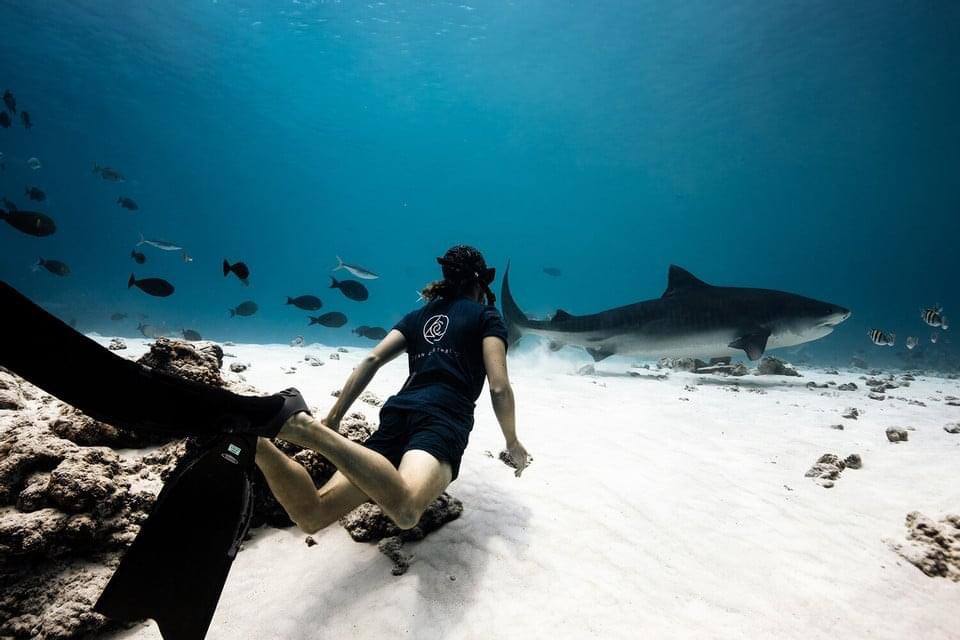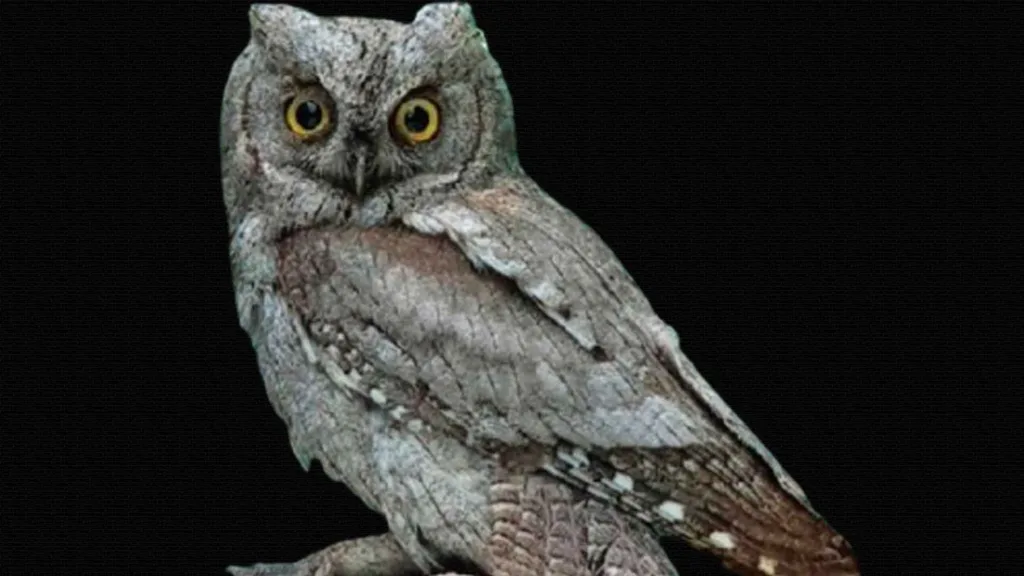
There are a lot of reasons why the Maldives’ marine biodiversity is unique. Underwater life in the Maldives is special for several reasons. “Everything in the deep is different from north to south: the marvelous sea mounts, pinnacles, and dynamic channels.” Dr. Ahmed Riyaz Jauhary, a well-known marine biologist, responded to my inquiry about the distinctive marine life of the Maldives.
There is an endless mystery to the splendor of the colorful species in the enormous Maldives Ocean, and it lies in their unique marine physical characteristics. Fuvahmulah is a natural phenomenon that rises from the depths, surrounded by a sea. Fuvahmulah is renowned as a premier destination for tiger sharks due to its many natural features.
Remind me of the first days, when we lazed about on our island’s picturesque sandy shore. I remember going with my late uncle Abdulla Rafeeq and seeing huge sharks near the Bokkoraa, a small fishing boat. One day that stood out was when the bokkoraa dashed through the neregando passageway with a big female shark. The shark was a striped tiger shark. After taking the shark out of the bokkoraa, they placed it on the shore. After that, they used a big knife to cut its belly.
There were eight little baby sharks that were still living. For the chance to witness the young shark, we couldn’t wait. We let the newborn sharks loose into Nere’s passageways with my companions. As soon as they touched down in the water, they began to swim away. That happened around 35 years ago. The practice of fishing for sharks was legal back then.
According to the accounts of elderly individuals, huge sharks have always gathered in close proximity to fishing vessels. When fishermen threw fish waste into the water, they saw a lot of big sharks swimming around. The ecosystem depends heavily on these recognizable predators. Fuvahmulah is a common place to see tiger sharks. As it drops sharply to depths over 2000 m, a shallow fringing reef encircles the island. The uniqueness of Fuvahmulah is based on its closeness to deep waters. Nearshore, you can observe both oceanic and coastal species (Araujo, Scotts, Zareer, 2024).
Recently, reports surfaced of a large aggregation of tiger sharks (Galeocerdo cuvier) surrounding the island. With 239 tiger sharks recorded throughout the six-year study period, the island hosts the highest recorded number of individual sharks ever seen in a geographically limited region. The waters off of Fuvahmulah are an important place for the tiger sharks to live. Female tiger sharks frequent the area during gestation with high site fidelity. Nevertheless, their migration and birthing locations are still a mystery. (Riyaz, Araujo, Crouch, Ivanova, Siyan, Dudek, and Vossgaetter, 2024).
People commonly think of tiger sharks as coastal pelagic predators that inhabit warm, temperate seas across all oceans. Usually found near the coast or on continental or island shelves, tiger sharks can travel long distances, even across oceans. Occasionally, they will dive as deep as 500 meters during an extended vertical migration (Domingo, Coelho, Cortes, Mas, Mejuto, Miller, Cartelle, Santos, Yokawa, n.d.). Tiger sharks spend most of their time in shallow waters. They spend about 36% of their time in shallow waters on average. According to Heuthaus, Dill, Marshall, and Buhleier (2001).
During the spring and summer, sharks were seen moving over the continental shelf more often. The recognized factors of shark mobility, such as ocean currents, water temperature, and prey distribution, probably played a role in this migration from offshore waters. Nutrient-rich water typically upwells in areas where the continental shelf narrows, boosting primary productivity. Scientists Papastamatiou et al. (2013) saw this change in movement and also found that it was linked to warmer ocean temps (23–26°C) and more chlorophyll a. It is possible that an increase in the presence of G. cuvier in inshore and coastal waters could be indicated by warmer water throughout summer combined with higher production.
Research on eastern Australian tiger shark habitat use and movement patterns indicated that tagged G. cuvier spent a lot of time at or near the surface. It was 71% of the time near the surface and 96% of the time in the top 100 meters of the water (Lipscombe, Spaet, Scott, Lam, Brand, Butcher, 2020).
Fuvahmulah has been designated as a UNESCO Biosphere Reserve. Fuvahmulah is a popular destination for tiger sharks due to its warm waters and year-round food availability. Most importantly, the mysterious and stunning topography contributes to this. The sea of Fuvahmula likewise offers high site fidelity and temporal residence (Vossgaetter, Dudek, Crouch, Cope, Ivanova, Siyan, Niyaz, Riyaz, & Araujo, 2024).
Dr. Ahmed Riyaz Jauhary, a Maldivian marine biologist, told me that scientific results on the 2022 Nekton expedition encircling the sea of Fuvahmulah would be published soon. This iconic species has enormous ecological and economic worth, so its protection is of the utmost importance.



